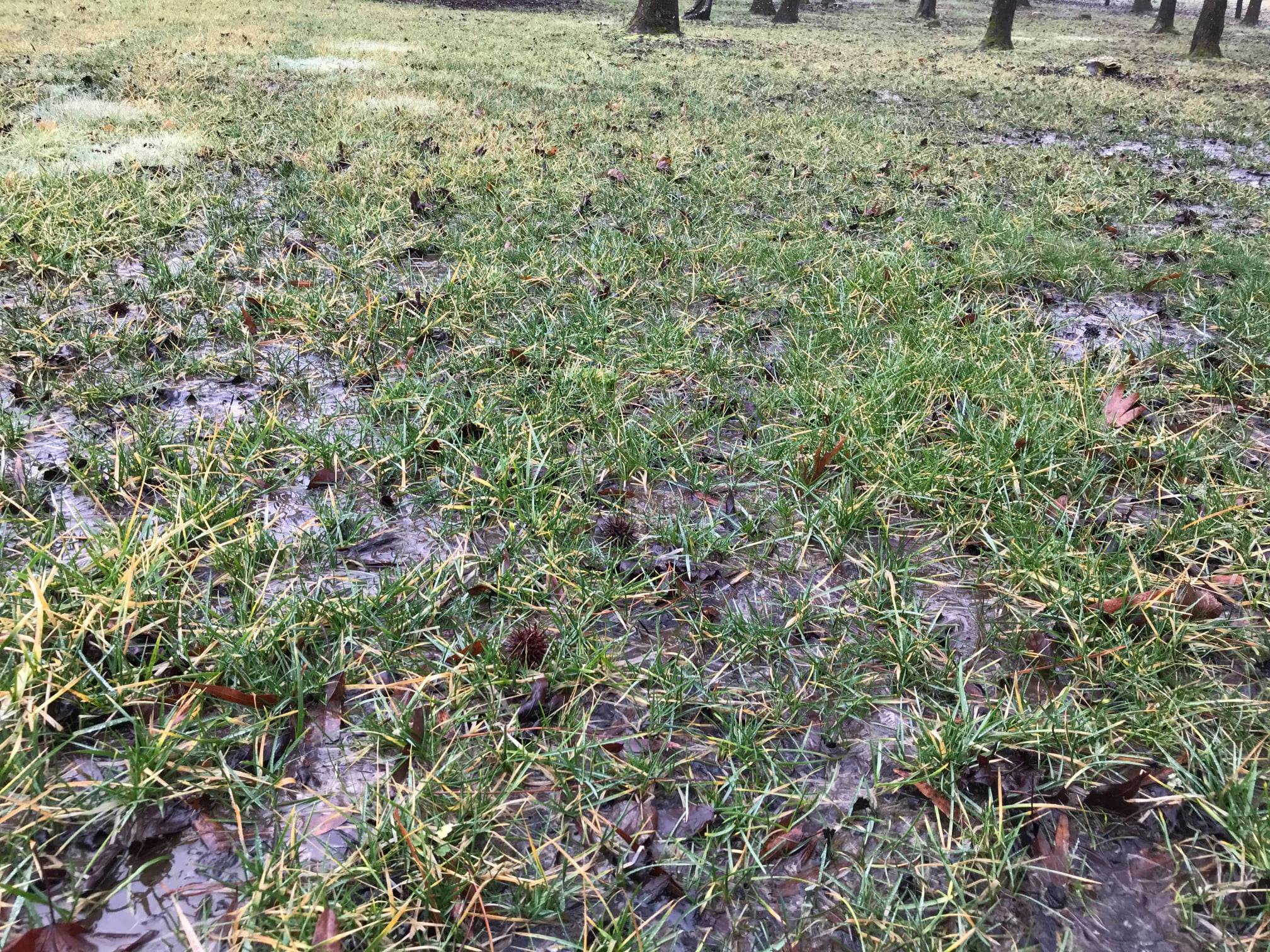Waterlogged Soil? Read This
go.ncsu.edu/readext?779019
en Español / em Português
El inglés es el idioma de control de esta página. En la medida en que haya algún conflicto entre la traducción al inglés y la traducción, el inglés prevalece.
Al hacer clic en el enlace de traducción se activa un servicio de traducción gratuito para convertir la página al español. Al igual que con cualquier traducción por Internet, la conversión no es sensible al contexto y puede que no traduzca el texto en su significado original. NC State Extension no garantiza la exactitud del texto traducido. Por favor, tenga en cuenta que algunas aplicaciones y/o servicios pueden no funcionar como se espera cuando se traducen.
Português
Inglês é o idioma de controle desta página. Na medida que haja algum conflito entre o texto original em Inglês e a tradução, o Inglês prevalece.
Ao clicar no link de tradução, um serviço gratuito de tradução será ativado para converter a página para o Português. Como em qualquer tradução pela internet, a conversão não é sensivel ao contexto e pode não ocorrer a tradução para o significado orginal. O serviço de Extensão da Carolina do Norte (NC State Extension) não garante a exatidão do texto traduzido. Por favor, observe que algumas funções ou serviços podem não funcionar como esperado após a tradução.
English
English is the controlling language of this page. To the extent there is any conflict between the English text and the translation, English controls.
Clicking on the translation link activates a free translation service to convert the page to Spanish. As with any Internet translation, the conversion is not context-sensitive and may not translate the text to its original meaning. NC State Extension does not guarantee the accuracy of the translated text. Please note that some applications and/or services may not function as expected when translated.
Collapse ▲ I’ve received several calls from homeowners asking how our wet, waterlogged soils will affect lawns and, especially, newly seeded lawns.
I’ve received several calls from homeowners asking how our wet, waterlogged soils will affect lawns and, especially, newly seeded lawns.
The good news is tall fescue tolerates wet soils. However, tall fescue seeds will not germinate in waterlogged soils. They need oxygen to germinate. The seeds will remain viable in waterlogged soils for several weeks. If soils remain saturated for more than three weeks, seedling germination will be reduced.
Once the seeds have germinated, tall fescue grows well in wet soil conditions, but if there is standing water in the lawn, the fescue will thin out.
Standing water also favors annual weeds. Annual bluegrass is considered a weed by most yard aficionados, and annual bluegrass loves saturated soils. At this point, there are few options for annual bluegrass control. If you have areas of your lawn where water pools, address the water issue first before worrying about the annual bluegrass.
If your lawn is not as thick as you’d like, what are your current options? In the short term, you could add more seed if you have not already applied a preemergence herbicide. This is a temporary fix. Spring-seeded tall fescue rarely lives through the summer heat. However, this is still your best option if you have bare spots and you need to strengthen your existing fescue stand. Another option is more aggressive spring fertilizer. Nitrogen promotes tillering of existing tall fescue. Tillering is when new daughter plants sprout from the crown of established fescue plants.

This tall fescue plant has produced a side shoot, also called a tiller. Fertilizer and good growing conditions encourage tillering. (Credit Seth Nagy)
Excessive rains can also cause fertility problems when nutrients leach in the soil. Leaching is when nutrients move with water through soil below the reach of grass roots. Potash and Sulfur are two nutrients that have the potential to leach out of the root zone.
Potash deficiencies are expressed as increased susceptibility to drought, winter injury, and disease. Soils deficient in potash are also more susceptible to weedy annual grasses.
When Sulfur is deficient, plants have a yellow appearance. It looks similar to a lack of nitrogen, but with a sulfur deficiency, the entire plant will be yellow. With a lack of nitrogen, the new growth is greener than the older leaves.
A soil test will indicate if there is a fertility problem in your soil. A soil test will let you know if there is a problem before your grass tells you there is a problem. Think of it as an early warning system. A soil test also keeps you from over applying nutrients. This can be not only expensive, but counterproductive. For example, applying sulfur when you don’t need it will lower the pH of your soil. Then Lime will be needed to raise soil pH back up.

The wet growing conditions have caused some newly seeded lawns to struggle. However, those planted in September and October, and properly fertilized, are doing well. (credit Seth Nagy)
When in doubt, take a soil test. You can get everything you need to take a soil test from the N.C. Cooperative Extension, Caldwell County Center.
—
Seth Nagy is the Caldwell County Extension Director. The N.C. Cooperative Extension, Caldwell County Center, 120 Hospital Ave. #1 in Lenoir, provides access to resources of N.C. State University and N.C. A&T State University through educational programs and publications.




